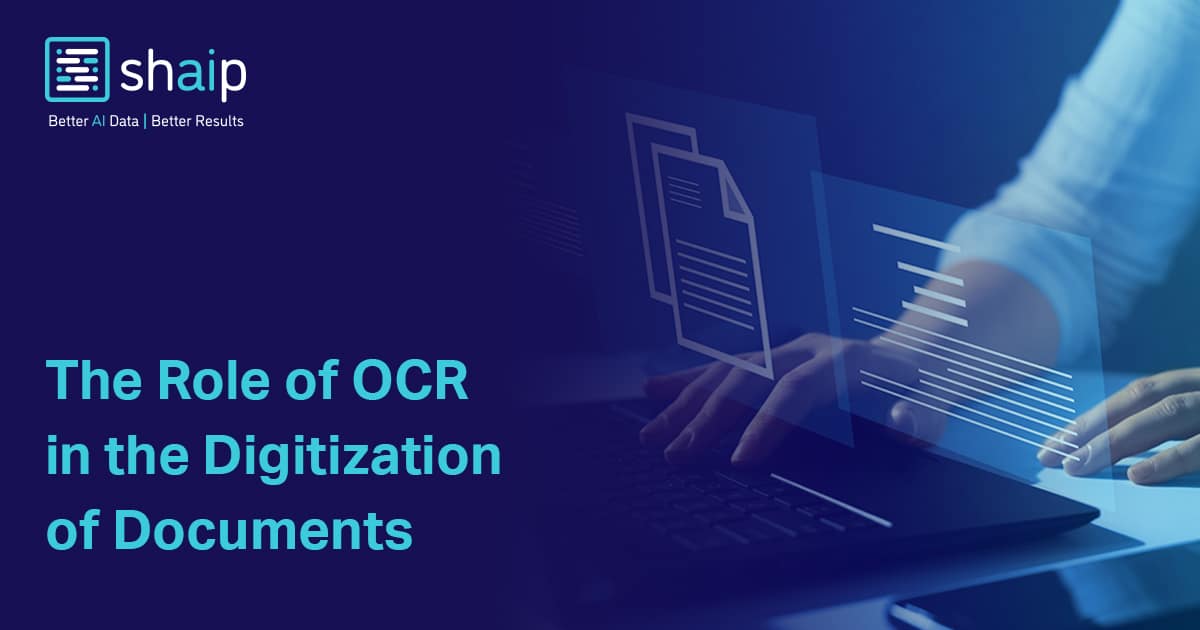
Going paperless is a vital phase in digital transformation. Companies benefit from reducing dependence on paper and using digital mediums to share information, make notes, create invoices, and much more. One key technology helping everyone with document digitization is OCR or Optical Character Recognition.
The OCR technology makes it possible to convert content from images to text, making the digitization process easier and faster. The combination of OCR and artificial intelligence is now automating the paperless work and automating the digitization process.
What is OCR Technology and How it Works?
 Optical character recognition converts the text image into a readable and editable text format. Using an OCR reader, we can scan a document, which can be a receipt, invoice, report, etc., in the image format. There are limitations with the OCR technology, such as that it cannot convert the text into an editable format. The contents of the image will be converted into plain text data.
Optical character recognition converts the text image into a readable and editable text format. Using an OCR reader, we can scan a document, which can be a receipt, invoice, report, etc., in the image format. There are limitations with the OCR technology, such as that it cannot convert the text into an editable format. The contents of the image will be converted into plain text data.
The OCR conversion process begins with image acquisition, where the scanner gets an image and converts it into binary data. The scanner will classify the light areas as the background of the image and the dark areas as text.
It will then clean the image and remove any errors to improve reading. Cleaning techniques used include:
- Deskewing
- Despeckling
- Boxes removal
- Script recognition
Then, with one of the two applicable algorithms, Pattern Matching, and Feature Matching, the image will get its penultimate shape and content. Pattern matching includes matching every character (called a glyph) with the store glyphs to regenerate the image in its digital version.
Role of OCR in Documents Digitization
 New technologies and systems have continued to emerge as we are moving ahead with digital transformation. Several technologies are required to transition from a time when everything was printed on paper to an era where paperless operations will become normal.
New technologies and systems have continued to emerge as we are moving ahead with digital transformation. Several technologies are required to transition from a time when everything was printed on paper to an era where paperless operations will become normal.
OCR is one of the technologies that can eliminate the tedious process of manual data entry and digitization. Here’s how OCRs help speed up the document digitization process:
- A built-in spell checker will flag all errors and doubts in the image before converting it into a readable format. Different programs have different spell-check systems and databases; choose the one that can facilitate quick error correction.
- The OCR program scanning the paper document will run a comprehensive analysis.
- It can also spell-check every sentence using the functionalities of MS Word. It will simultaneously add new and complex scientific terms to its dictionary for further relevance.
Moving on, an OCR program has an in-built system to optimize media data and information. It can improve the quality by optimizing the media with higher clarity and visibility.
Generally, in an OCR program, the black and white line images are in art mode, and they are saved in GIF and PNG format. However, the black and white photographs are saved in GIF or JPEG format, and color photographs are saved in JPEG format. Companies need to set up the OCR infrastructure to avail the benefits of this technology.
Benefits of OCR for Document Digitization
The OCR process allows businesses to digitize all the paperwork related to their operations and services. With digitized documents, companies can benefit from higher security, accessibility, and accuracy.





